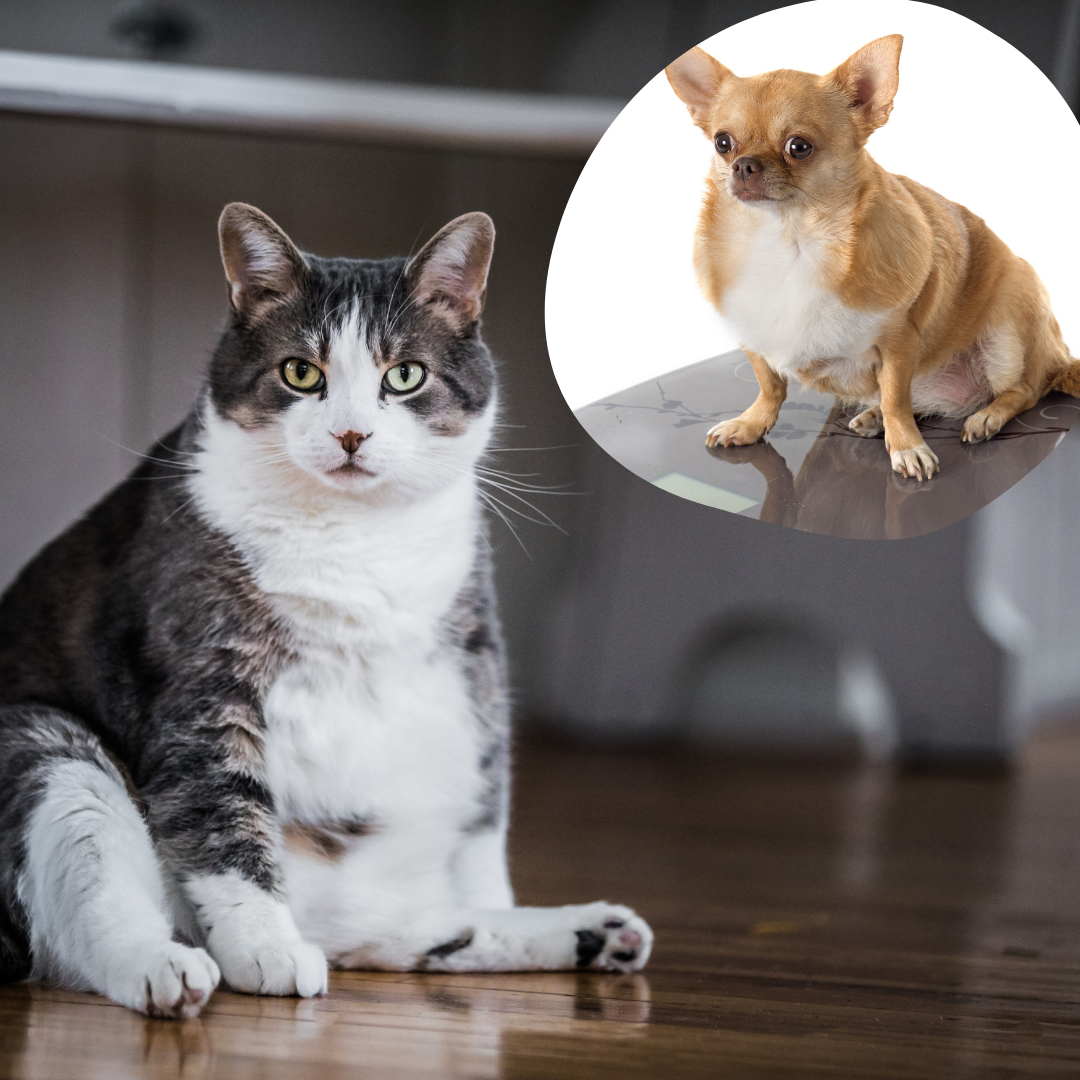
The Heavy Truth About Pet Obesity
Let’s be honest: when your dog looks like a walking ottoman, your cat resembles a furry throw pillow with whiskers, and your rabbit’s belly jiggles more than it hops, we have a problem. Pet obesity isn’t just “a little extra fluff.” It’s one of the most common medical conditions veterinarians see today with studies showing that anywhere from a quarter to more than half of household pets are overweight.
Obesity in pets is more than just extra padding; it’s a disease, and it comes in more than one flavor :
- Simple obesity : too many calories in, too little exercise out.
- Metabolic obesity : linked to hormonal issues like hypothyroidism or Cushing’s disease.
- Drug-induced obesity : steroids and some medications can pack on the pounds.
- Rebound obesity – pets who lose weight and then regain it (because, like us, they’re not immune to yo-yo dieting).
The consequences aren’t the same across species. Dogs lugging around too many kilos pay for it with aching joints, arthritis, diabetes, heart disease, and shortened stamina, not to mention much higher anesthetic risks. Cats, with their delicate metabolism, are ticking time bombs for diabetes and hepatic lipidosis if they stop eating even for a short while. Rabbits face arthritis, skin infections tucked in between fat folds, the inability to groom, and even flystrike in warmer months, alongside gut stasis when their bellies get in the way of normal eating and moving.
So how do pets get here? The recipe is depressingly familiar. Too much food, especially calorie-dense kibbles, pellets, or table scraps. Free feeding bowls that never go empty. A sedentary lifestyle (because a cat staring out the window is not the same thing as hunting, and a “walk” to the mailbox is not exercise for a dog) Neutering changes metabolism and requires diet adjustments most owners never make. Certain breeds are genetically predisposed. Some conditions or medications alter weight regulation. And finally, the human factor: the mistaken belief that “he’s hungry again” or “she looks cute with a belly” is harmless.
The culprits in the food bowl are different depending on the species. Cats become overweight when they live off dry kibble high in carbohydrates, lick up tuna snacks like candy, or get served milk they can’t properly digest. Dogs get fat off table scraps, bread, pasta, and the heroic spoonfuls of peanut butter used to hide every pill. Rabbits pack on weight with endless pellets, sugary fruit, and those dreaded yogurt drops masquerading as healthy treats.
The good news is that weight loss is possible, but it has to be slow and intentional. Cats need carefully portioned wet diets, puzzle feeders to slow down the gobbling, and climbing structures to encourage movement—never starvation, since two or three days without food can trigger fatal liver disease. Dogs benefit from prescription weight-loss diets, structured walks, swimming sessions, and human guardians who understand that a trip to the fridge is not cardio. Rabbits slim down best on unlimited hay, restricted pellets, daily leafy greens, and actual opportunities to hop, dig, and run rather than being confined to a hutch.
Life expectancy makes the stakes clear. An overweight dog may lose two years of life, a cat as much as four, and a rabbit similarly sees its lifespan cut short. Beyond that, obesity reduces quality of life: fewer zoomies, less grooming, more disease.
Owners often ask how to tell if their pet is overweight. The simplest test is tactile: run your fingers over the ribs. If you need to press hard to feel them, or if your pet’s body resembles a sausage with legs, you’re probably dealing with obesity. Cats may have swinging belly pouches, dogs lose their waist definition, and rabbits turn into rounded little barrels. Breed plays its part too—Labradors, Beagles, Dachshunds, Pugs, Bulldogs, and Cockers are canine poster children for obesity, while British Shorthairs, Persians, and Maine Coons often tip the feline scales, and dwarf rabbit breeds like Netherland Dwarfs and Lionheads are particularly vulnerable when kept indoors with little exercise.
Calories are the hidden currency of it all. The average cat needs just 200–250 per day, far less than most owners realize. Dogs require about 30 calories per pound of body weight, so a 20-kilogram dog gets roughly 1,300 daily. Rabbits operate on around 50 per kilogram per day, though hay, which should make up the bulk of their diet, is low enough in calories that it keeps their gut moving without fattening them.
The sobering truth is that obesity is one of the few diseases that is entirely preventable and, with dedication, reversible. It’s not extra love or proof that your pet eats well. It’s a medical condition that shortens their time with you. Saying no to the begging eyes and yes to portion control, exercise, and healthier routines may not feel as indulgent in the moment, but it is the single greatest act of love you can offer—because nothing says “I adore you” more than giving your dog, cat, or rabbit the chance to live longer, move easier, and thrive.
Written by: Dr. Razan Hassan El Moussawi – Veterinarian
CONTACT US TO BOOK AN APPOINTMENT
Email frontdesk@abvc.ae
Call 04-3408601
WhatsApp 050-3440987
